Elliptical Monogenic
This chapter presents our innovative elliptical monogenic analysis of color images. The method relies on the prior estimation of the signal's local main orientation, which is achieved thanks to the Riesz transform and the structure tensor formalism. Once the optimal orientation is determined locally, a whole "signal processing inspired" feature set is extracted, according to the elliptical model that separates the geometric information from the color information.
All technical details can be found in this article:
A more recent formulation with arbitrary number of color channels:
The Color Riesz Transform



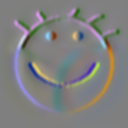
The structure tensor formalism is originally based on the Gradient operator. However, it can be shown that the Riesz transform, which is very analogous, can be used as well, when combined with prior band-pass isotropic filtering (Selecting a frequency band is natural in this context). Note that linear filtering can be done channelwise on vector-valued signals without any known issue regarding the color information. Thanks to differential geometry, the structure tensor is already well defined for color images (Popular as the "Di Zenzo color Gradient"). It requires to compute the Riesz transform channelwise, and then to combine its x- and y- components (real and imaginary parts in our case). The Riesz-based structure tensor reads:

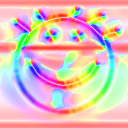
This uses a smoothing filter f (typically Gaussian-like), that optimizes the estimation of the signal's local main orientation:
This can be used to steer the Riesz transform to obtain its response along this particular direction:
At many locations θ can be very similar to the Riesz direction itself, although the structure tensor provides optimal smoothing. In the color case, the color channels may even be oriented differently at a same location. Nevertheless, the monogenic framework as well as the structure tensor are essentially based on a directional model. So we will restrict ourselves to assuming that the signal's main orientation is consistent through all channels. And for our color model, we choose to steer the whole color Riesz transform towards this same optimal spatial direction, to form the directional Riesz transform:

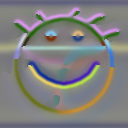
Due to steering, this color signal is no longer complex-valued, Its a 90° phase shifted version of the input, with the phase shifting locally occurs towards θ. In terms of contours, we can see that the color lines and edges are turned one into the other, regardless of their orientation, with good consistency of their color patterns. The directional Riesz transform is a strict analogous to the channelwise Hilbert transform from the previous chapter.
We can now compute the elliptical features.
Chosen references on differential geometry (structure tensor): * S. Di Zenzo “A note on the gradient of a multi-image” CVGIP 1986 * D. Tschumperlé & R. Deriche “Vector-valued image regularization with PDEs...” IEEE TPAMI 2005 * N. Sochen et al. “A general framework low level vision” IEEE TIP 1998
The Elliptical Monogenic Representation
The Elliptical monogenic representation is defined by the set of features obtained from the combination of a color 2d signal with its directional Riesz transform, according to the following flowchart:
One simply has to replace the channelwise Hilbert transform of previous chapter by the above described directional Riesz transform, to form a complex-valued 2d color signal directly convertible to 6 elliptical 2d feature maps. The local orientation from the tensor is added in the feature set. Let us now comment the monogenic elliptical feature maps individually.


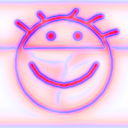
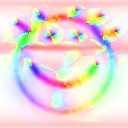
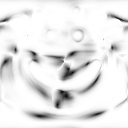
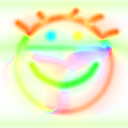
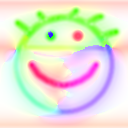
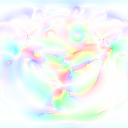
We can see that the amplitude properly shows well-centered maxima on color lines as well as edges, which confirms the optimized line-edge detection property (phase invariance) of the monogenic framework, now transferred to the color world. As well, the (wrapped) phase values make the correct classification between both contour types: lines and peaks are shown in red hue (hair, eyes, mouth), edges are shown in blue hue (around the face). The phase is a pure geometric feature. Linearity feature is near 1 almost everywhere, indicating that most contours have a simple two-color pattern, which is true in this synthetic image where most contours involve two distinct colors. These two colors form an axis in the color space, which is precisely the information encoded by (α1,α2). These features appear stable on areas where the color pattern is constant. The third angle is only relevant when both A is significant and λ is less than 1, which occurs almost nowhere, excepted around shadow crossings in the middle of the face. Actually these color patterns involve more than two colors. In addition, these areas may reveal different local orientations across color channels, which is out of our signal model.
Now that we have presented our color extension of the monogenic signal, let us embed it within a wavelet transform. The wavelet framework can take the method further towards feature-based reconstruction, as a reversible color image representation.